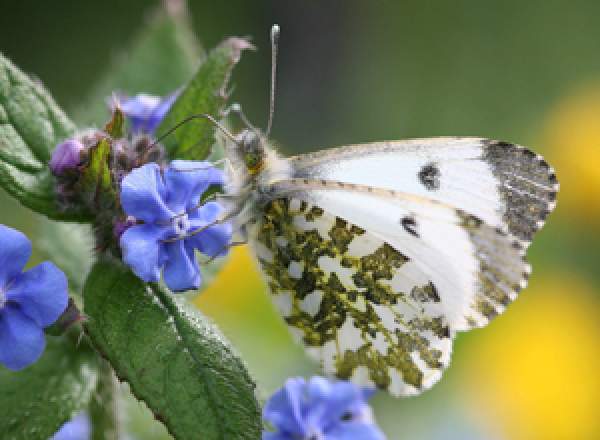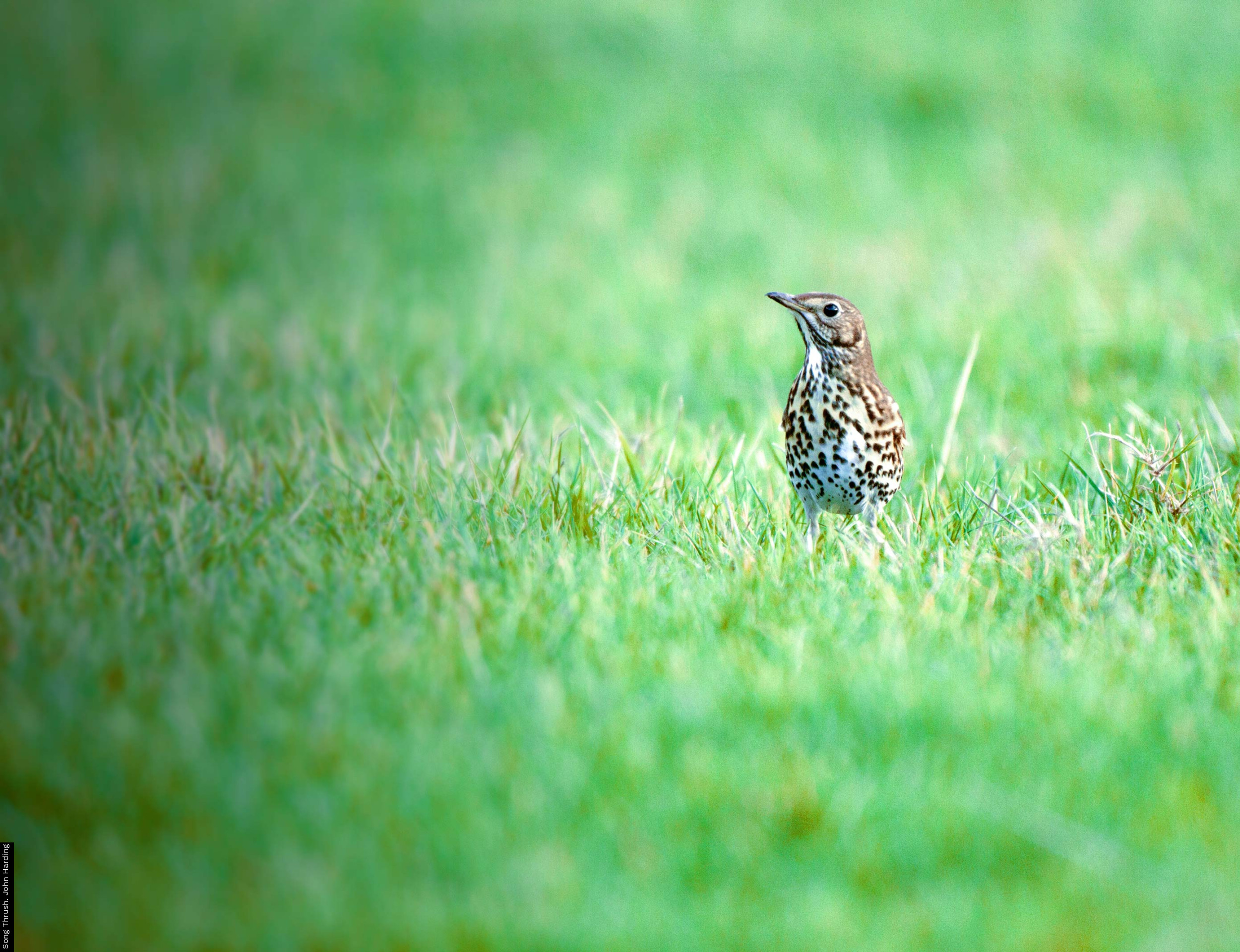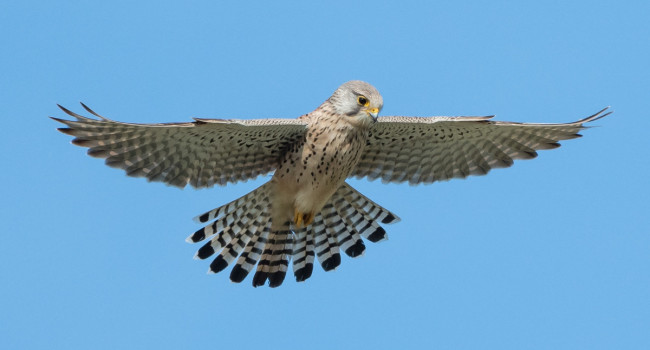Orange Tip
Anthocharis cardamines

The male is distinctive in appearance and cannot be mistaken for any other butterfly encountered in Britain or Ireland. It has bright orange 'thumbprints' on the edge of the upper surface of the forewings, tipped with black. In the female, the area of black is slightly larger and there is no orange. As such, the female Orange Tip may appear to resemble a Small White when viewed from above, but the mottled green and white underwing (hind wing only) is diagnostic.
Male Orange Tips patrol in search of females and are highly conspicuous because of the orange tips to their wings. These serve to alert potential predators to the distasteful nature of this species, something that results from the mustard oils accumulated within the body during the caterpillar stage. The undersides of the hind wings are mottled green and white. When at rest, these conceal the more brightly coloured forewings of the male. This green and white camouflage is especially effective when individuals perch on cow parsley.
Changes in the countryside, most notably the loss of hay and flood meadows, have reduced the abundance of cuckoo flower (once the favoured foodplant). Southern populations of Orange Tip now appear to be increasingly reliant on garlic mustard, a plant that can be abundant on damp roadside verges if an enlightened management approach is adopted by the local council.
Eggs are laid at the base of a flowerhead, often on a plant that is in full sun. However, it is unusual to find more than one egg on a single flowerhead (young Orange Tip caterpillars are cannibalistic) because the egg-laying females produce a pheromone which deters other females from laying an egg on the same flower.
As the caterpillars grow, they feed on the developing seed pods (and to a lesser extent the leaves, buds and flowers) of crucifers. In the garden, the crucifers often include honesty, dame’s violet, cuckoo flower and garlic mustard, although there is evidence to suggest that the caterpillars have poor survival rates on honesty and dame’s violet. Their grey-green colouration provides very effective camouflage.






Share this page